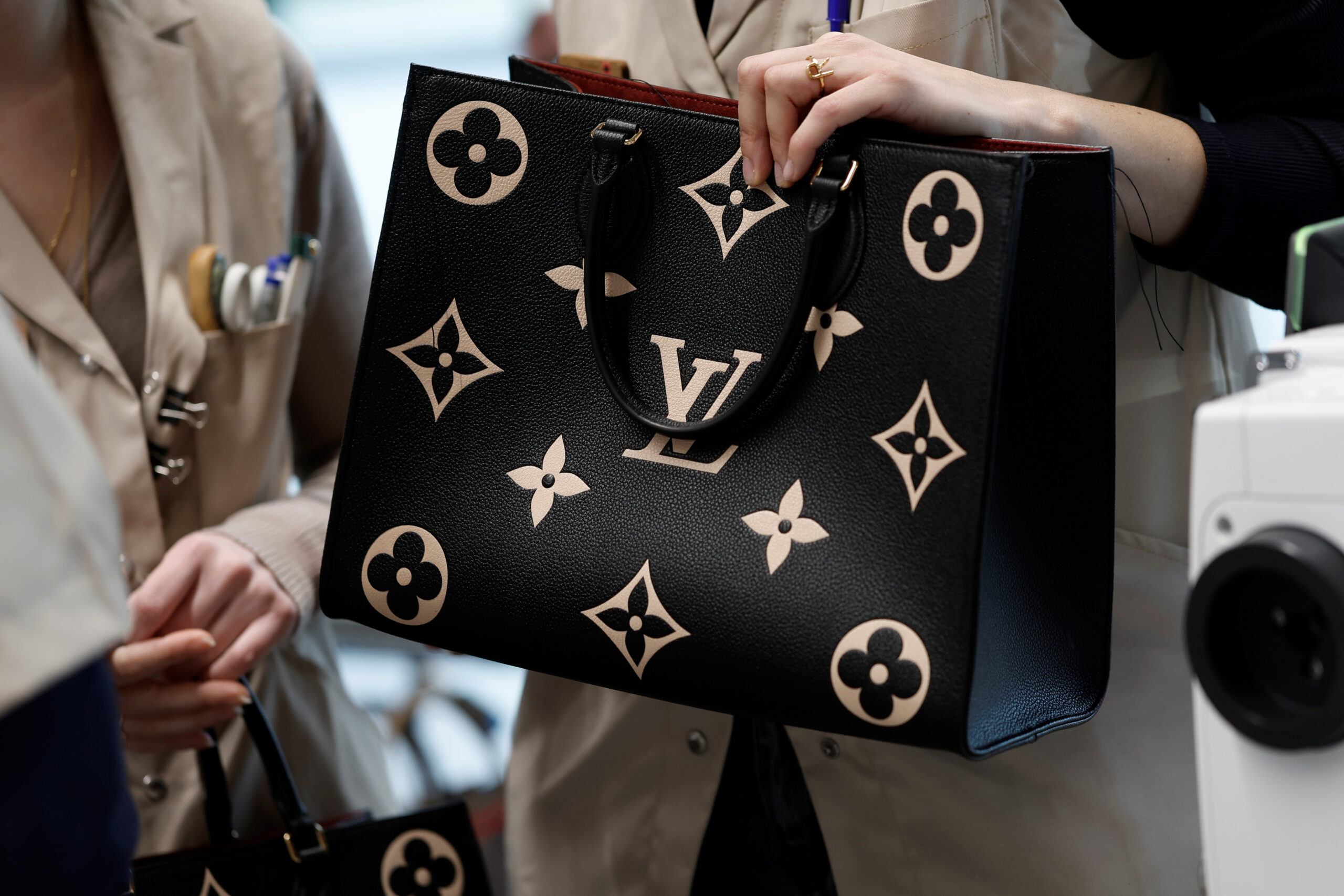In a world where trends come and go, some names stand as beacons of timeless elegance and prestige. Chanel, Cartier, and Vuitton aren’t just labels but legends. They’ve woven themselves into the luxury fabric, leaving an indelible mark that time can’t erase.
Join us on a journey through the annals of fashion history as we unveil the secrets behind these iconic legacy makers. In this exploration, we’ll take you from the audacious beginnings of Coco Chanel’s dream to the meticulous craftsmanship of Cartier’s masterpieces and the adventurous spirit of Louis Vuitton’s trunks.
But it’s not just about the past; it’s about how these brands remain eternally iconic in the present. We’ll delve into the common threads that bind them, the iconic products that have transcended generations, and the enduring allure of luxury.
So, whether you’re an ardent fashion enthusiast or simply curious about timeless branding, get ready to be captivated by the stories of Chanel, Cartier, and Vuitton. They’re more than just brands; they’re a testament to the power of legacy and the magic that keeps them shining in a constantly changing world.
Chanel: A Tale of Timeless Elegance
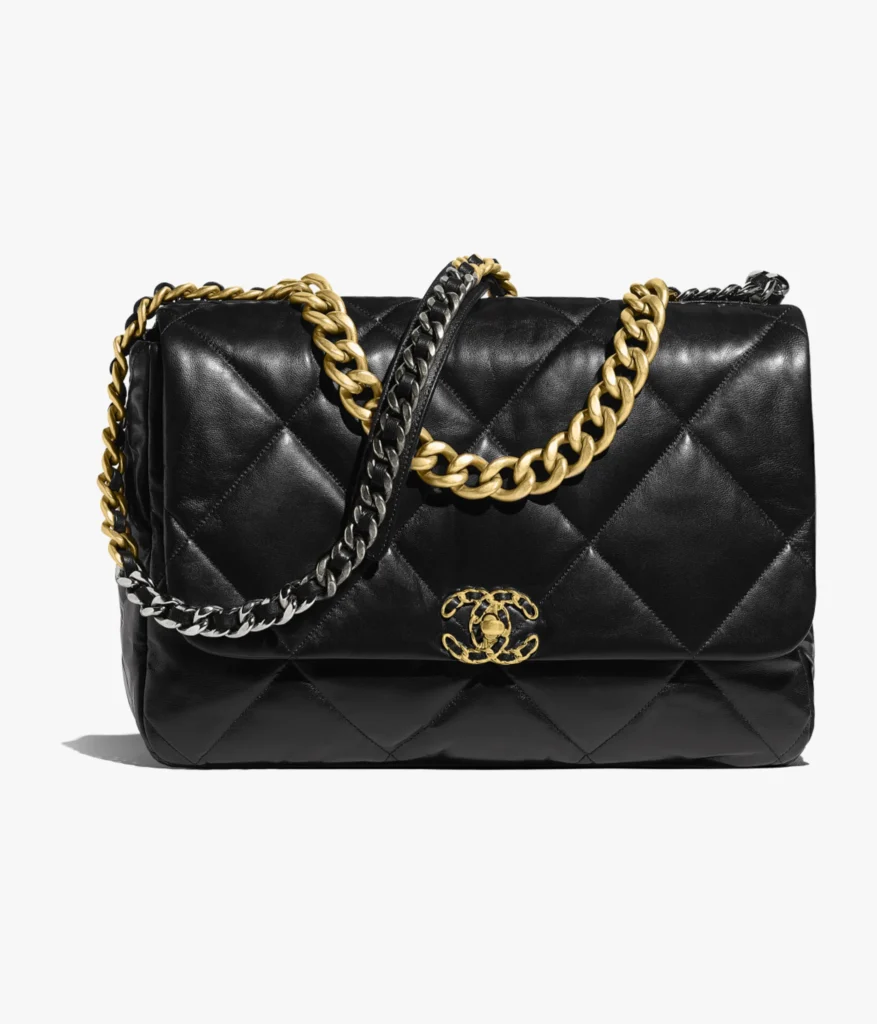
In the ever-evolving fashion world, few names evoke reverence and admiration like Chanel. It’s a brand that goes beyond clothes and accessories; it embodies timeless elegance, a legend that transcends the boundaries of time. In this exploration, we unravel the journey of Chanel, from its humble beginnings to its lofty status as a fashion powerhouse.
The Origin and Vision of Chanel
Coco Chanel, the visionary behind the brand, was a woman far ahead of her time. Born in Saumur, France, in 1883, she rose from a challenging upbringing to become a fashion icon. Chanel’s vision was rooted in simplicity, elegance, and a desire to liberate women from the confines of uncomfortable, ornate clothing. In an era when corsets and extravagant hats were the norm, she introduced a radical concept—casual, comfortable, and chic attire.
Chanel’s vision was clear: to create fashion that was not just visually appealing but also practical. Her designs focused on clean lines, comfort, and a rejection of the ostentatious. She famously declared, “Simplicity is the keynote of all true elegance,” a motto that continues to define the brand’s philosophy.
Evolution of Chanel’s Signature Style
One of the key elements of Chanel’s timelessness is its ability to adapt and evolve while retaining its essence. The brand introduced the world to the little black dress, a piece of clothing that became an icon of style and sophistication. Chanel’s affinity for neutral colors, particularly black and white, and the use of luxurious fabrics like tweed and jersey set the stage for modern fashion.
The iconic Chanel suit symbolizes timeless elegance with its structured silhouette and boxy jacket. It’s a testament to the brand’s ability to reinterpret and reimagine classic designs for contemporary fashion.
Coco Chanel’s Enduring Legacy
Coco Chanel’s legacy extends far beyond her contributions to fashion. Her vision and determination paved the way for women to embrace comfort and style simultaneously. She revolutionized the way women dressed, liberating them from restrictive garments.
Chanel also introduced the world to the first designer perfume, Chanel No. 5, which remains an iconic fragrance. Her bold and independent spirit left a lasting mark on women’s empowerment, reflecting her famous words, “I don’t do fashion; I am fashion.”
Iconic Chanel Products Through the Ages
The longevity of Chanel’s elegance can be seen in its iconic products. The quilted Chanel handbag, known as the “2.55” bag, was designed by Coco Chanel in the 1950s. It remains one of the most coveted fashion accessories, showcasing the brand’s commitment to craftsmanship and timeless style.
Chanel’s jewelry, particularly its classic pearl necklaces and the “Camélia” flower, are cherished for their understated glamour. The interlocking “CC” logo, introduced in the 1960s, has become synonymous with luxury and is proudly displayed on various Chanel creations.
In the world of fragrances, Chanel continues to dazzle with its classics like Chanel No. 5, Chanel Chance, and Coco Mademoiselle. These scents are more than perfumes; they encapsulate the brand’s enduring elegance.
Chanel’s tale is a story of innovation, reinvention, and an unwavering commitment to timeless elegance. The brand’s ability to transcend eras and adapt to changing tastes while staying true to its original vision is a testament to its everlasting influence on fashion. In every Chanel creation, there’s a whisper of Coco Chanel’s enduring legacy and timeless mantra: “Fashion changes, but style endures.”
Chanel’s Influence on Fashion and Beyond
Coco Chanel’s name inevitably comes to mind when we consider fashion icons. Her contributions to the world of fashion go far beyond creating stylish clothing. Chanel’s impact on women’s fashion, her revolutionary designs, and her timeless creations have left an indelible mark that extends into the realms of accessories and fragrances.
Chanel’s Role in Revolutionizing Women’s Fashion
Coco Chanel’s influence on women’s fashion is immeasurable. Chanel dared to challenge the norm in an era when women were still confined to corsets and elaborate dresses. She introduced a concept of fashion that was liberating and empowering for women. Her designs were a breath of fresh air, embracing simplicity and comfort.
One of her most notable contributions was the introduction of trousers for women. In the early 20th century, women wearing pants was considered scandalous. Chanel’s championing of this practical and stylish garment was revolutionary, setting the stage for the androgynous fashion that we see today.
Her “Chanel Suit” is another landmark creation. This two-piece outfit, consisting of a knee-length skirt and a tailored jacket, redefined women’s fashion. It combined elegance with functionality, allowing women to move freely and comfortably while looking effortlessly chic.
The Little Black Dress Phenomenon
Coco Chanel’s genius can be encapsulated in a single piece of clothing—the little black dress. 1926, she unveiled a simple, knee-length black dress in American Vogue. It was met with skepticism initially but soon became a sensation. The little black dress, or “LBD,” became an emblem of style and sophistication.
What made the LBD so extraordinary was its versatility. It was a blank canvas that women could accessorize to create countless different looks. The little black dress was the perfect backdrop for personal expression, from a strand of pearls to a statement brooch.
The little black dress was a fashion statement and a symbol of liberation. It freed women from the constraints of elaborate, ornate gowns and allowed them to embrace self-assured simplicity. It is an enduring testament to Coco Chanel’s design philosophy, “Fashion is architecture: it is a matter of proportions.”
Chanel’s Impact on Accessories and Fragrances

Beyond clothing, Chanel’s influence extended to accessories and fragrances. Her designs have given rise to some of the most iconic accessories in fashion history. The quilted Chanel handbag, designed in the 1950s, is a prime example. It is the “2.55” bag and exudes timeless elegance and craftsmanship. The chain-link shoulder strap was a groundbreaking innovation, allowing women to carry their bags hands-free.
Chanel’s jewelry, including classic pearl necklaces and the “Camélia” flower, is celebrated for its understated glamour. The interlocking “CC” logo, introduced in the 1960s, has become a symbol of luxury, adorning jewelry, accessories, and clothing.
In the world of fragrances, Chanel made history with Chanel No. 5, the world’s first designer perfume. Launched in 1921, this iconic scent redefined the fragrance industry. Its blend of florals and aldehydes embodied Chanel’s commitment to elegance and luxury. Coco Chanel’s belief that “A woman who doesn’t wear perfume has no future” has resonated through the decades.
Chanel’s influence on fashion and beyond is profound and enduring. Her commitment to simplicity, elegance, and practicality not only transformed how women dressed but also paved the way for a new era of empowerment. Her revolutionary designs, epitomized by the little black dress, inspire fashion enthusiasts worldwide. Beyond clothing, Chanel’s accessories and fragrances have become symbols of luxury and timeless elegance, reflecting the enduring legacy of Coco Chanel.
Challenges Faced and Overcome
Behind Chanel’s timeless elegance and iconic status lies a story of resilience and determination. Like any other brand, Chanel has faced its fair share of challenges throughout history. From turbulent times in history to the evolving demands of the fashion world, the brand has encountered obstacles that would have derailed others. Yet, how Chanel has weathered these storms and emerged even stronger defines its legacy.
Weathering Turbulent Times in History
Chanel’s journey has been a challenging ascent to success. The brand had to confront some of the most turbulent periods in modern history. One such challenge was World War II. The Nazi occupation of Paris forced Coco Chanel to close her boutiques. It was a period of disruption, fear, and uncertainty. However, even during this tumultuous time, Chanel’s designs remained iconic.
Chanel’s resilience and commitment to her vision were evident. She refused to compromise her values or bow to external pressures. Her independence and determination allowed the brand to survive the war and continue its legacy after the conflict ended.
Maintaining an Exclusive Brand Image
One of the unique challenges that Chanel faced was maintaining its exclusive brand image while staying relevant to a changing consumer landscape. As fashion democratized and trends shifted, Chanel remained steadfast in its commitment to luxury and elegance.
The brand’s strategy was to balance tradition with innovation. While staying true to its timeless designs, Chanel introduced new collections that appealed to a younger, more diverse audience. The brand’s ability to adapt without sacrificing its core identity is a testament to its enduring appeal.
The Resurgence of Chanel in the 21st Century
The 21st century brought new challenges to the fashion world, including rapidly changing consumer preferences and the rise of digital media. Chanel had to adapt to the digital age to remain relevant in this evolving landscape.
One of the most significant moves was the appointment of Karl Lagerfeld as creative director in 1983. Lagerfeld’s vision injected fresh life into the brand. He retained the essence of Chanel’s timeless designs while giving them a contemporary twist. His ability to balance tradition with innovation led to the brand’s popularity resurgence.
Additionally, Chanel embraced digital marketing and e-commerce, allowing it to connect with a younger, tech-savvy audience. The brand’s presence on social media, particularly Instagram, helped it reach a new generation of fashion enthusiasts.
The challenges faced by Chanel have only contributed to its enduring legacy. It weathered turbulent historical periods, maintained its exclusive brand image, and successfully adapted to the demands of the 21st century. Through determination, innovation, and a commitment to timeless elegance, Chanel has survived and thrived, proving that true icons are built to withstand the test of time.
Cartier: Crafting Timeless Elegance
Cartier, a name synonymous with luxury and sophistication, is a brand that has mastered the art of crafting timeless elegance. With a rich history dating back to the 19th century, Cartier’s journey is a testament to the enduring appeal of its creations. From the birth of its timeless aesthetic to its iconic symbols, Cartier has left an indelible mark on the world of high-end jewelry and timepieces.
The Birth of Cartier’s Timeless Aesthetic
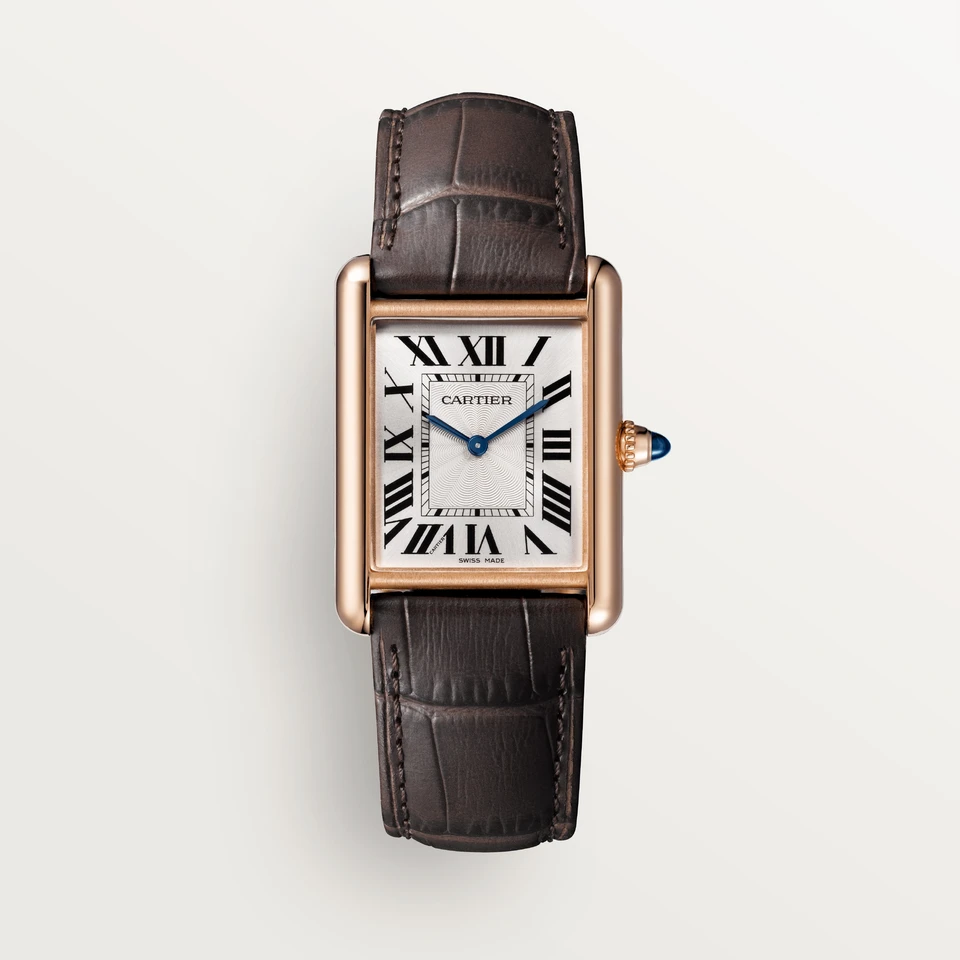
The Cartier story begins in 1847 when a young Louis-François Cartier took over his master’s jewelry workshop in Paris. It didn’t take long for Cartier to make a name for himself as a skilled and innovative jeweler. His creations combined classical elegance with a touch of modernity, setting the stage for the brand’s distinctive aesthetic.
One of Cartier’s early successes was the introduction of platinum in jewelry design, which allowed for intricate and delicate settings. This innovation revolutionized the jewelry industry, enabling Cartier to create exceptional beauty and craftsmanship pieces. The brand’s commitment to quality and artistry laid the foundation for its timeless elegance.
Timepieces as Works of Art
While Cartier is renowned for its jewelry, it also boasts a rich tradition in watchmaking. The brand’s foray into watch design began in the early 20th century and was revolutionary. Cartier watches were not mere timekeeping devices but exquisite works of art.
The Santos de Cartier, created in 1904, was one of the world’s first wristwatches. Designed for the aviator Alberto Santos-Dumont, it was a harmonious fusion of form and function. Cartier’s commitment to elegant design and precision engineering resulted in timepieces that transcended trends and stood the test of time.
The Iconic Panther Motif
One of Cartier’s most iconic symbols is the panther. This graceful and powerful feline has been a recurring motif in the brand’s creations since the early 20th century. The panther symbolizes strength, sensuality, and allure, and it has become synonymous with Cartier’s jewelry.
The first panther-themed piece, the “Panther” bracelet watch, was created in 1914. It was a groundbreaking design that melded a bracelet’s flexibility with a watch’s timekeeping function. The panther has continued inspiring Cartier’s designs, from exquisite necklaces to elegant timepieces, symbolizing timeless beauty and sophistication.
Cartier’s Engagement Rings: A Symbol of Love
Cartier has played a pivotal role in defining the tradition of engagement rings for over a century. The “Solitaire” ring, introduced in 1895, was a brilliant innovation. Its simplicity and elegance made it the perfect symbol of enduring love and commitment. This iconic design set the standard for engagement rings that have endured through the ages.
Cartier’s commitment to crafting timeless elegance is exemplified in every engagement ring it creates. The brand’s high-quality diamonds and meticulous craftsmanship ensure each piece becomes a cherished heirloom, embodying love and commitment for future generations.
Cartier’s journey is a remarkable testament to the art of crafting timeless elegance. Cartier has left an indelible mark on jewelry and watchmaking, from its innovative use of materials to its iconic symbols and enduring traditions. Its creations are beautiful ornaments and expressions of sophistication, artistry, and the enduring spirit of elegance.
Innovations and Traditions
Cartier, the revered jewelry and watchmaking house, is a brand that seamlessly marries the spirit of innovation while preserving timeless traditions. Its journey is a testament to its ability to pioneer new concepts, master high jewelry art, and create iconic watch collections.
The Pioneering Spirit of Cartier
Cartier’s legacy is intertwined with a pioneering spirit that has consistently pushed the boundaries of the industry. One of the most iconic moments in Cartier’s history is its role in popularizing the wristwatch.
In 1904, Louis Cartier designed the Santos de Cartier, a watch created for the aviator Alberto Santos-Dumont. It was a groundbreaking design that defied the norms of the time when pocket watches were prevalent. This wristwatch addressed the aviator’s need for a practical timekeeping device and set a trend that would redefine the world of horology.
Cartier’s pioneering spirit extended to other aspects of jewelry and watchmaking. The brand was instrumental in introducing platinum as a metal for jewelry, revolutionizing the way gemstones were set and creating innovative mechanisms for watch complications.
Mastering the Art of High Jewelry
Cartier’s high jewelry is synonymous with opulence and artistry. The brand’s commitment to crafting exquisite, beautiful, and technically brilliant pieces is unparalleled. The Art Deco period of the 1920s saw Cartier creating bold and geometric designs that captured the era’s zeitgeist.
Cartier’s use of high-quality gemstones, innovative settings, and a profound understanding of design principles resulted in masterpieces that continue to captivate and inspire. Cartier’s high jewelry creations are elegant and sophisticated, from iconic panther-themed jewelry to extraordinary tiaras and necklaces.
The brand’s dedication to high jewelry extends to creating pieces that tell stories. Whether it’s the beautiful Tutti Frutti collection inspired by the vibrant colors of India or the mysterious and alluring pieces from the Cartier Magicien collection, each work of art is a testament to the brand’s unwavering commitment to excellence.
Iconic Watch Collections
Cartier’s watch collections are a celebration of tradition and innovation. The Tank, introduced in 1917, is a design that has transcended time. Its clean lines and geometric form were inspired by the tanks used in World War I, and it remains a symbol of understated elegance.
The Ballon Bleu de Cartier, introduced in 2007, showcases Cartier’s ability to create contemporary timepieces while retaining the brand’s signature aesthetic. Its distinctive blue sapphire cabochon crown and unique case shape set it apart as a modern classic.
The Drive de Cartier, introduced in 2016, is a testament to the brand’s ability to craft watches that blend form and function seamlessly. Inspired by classic automobiles, it is a nod to the brand’s rich history and a symbol of Cartier’s dedication to innovation.
A perfect harmony of innovation and tradition marks Cartier’s journey. Its pioneering spirit and unwavering commitment to high jewelry and watchmaking have created iconic designs that continue to captivate and inspire. Cartier’s creations are beautiful adornments and expressions of craftsmanship, elegance, and a legacy of excellence.
Legacy in Luxury Watchmaking
Cartier, a name renowned for its excellence in jewelry, has equally left an indelible mark in the world of haute horlogerie. Its legacy in luxury watchmaking is a captivating journey highlighting Cartier’s role in shaping the industry, the evolution of iconic timepieces like the Cartier Santos and Tank watches, and its unique connections, including the Cartier-Bell & Ross partnership.
Cartier’s Role in the World of Haute Horlogerie
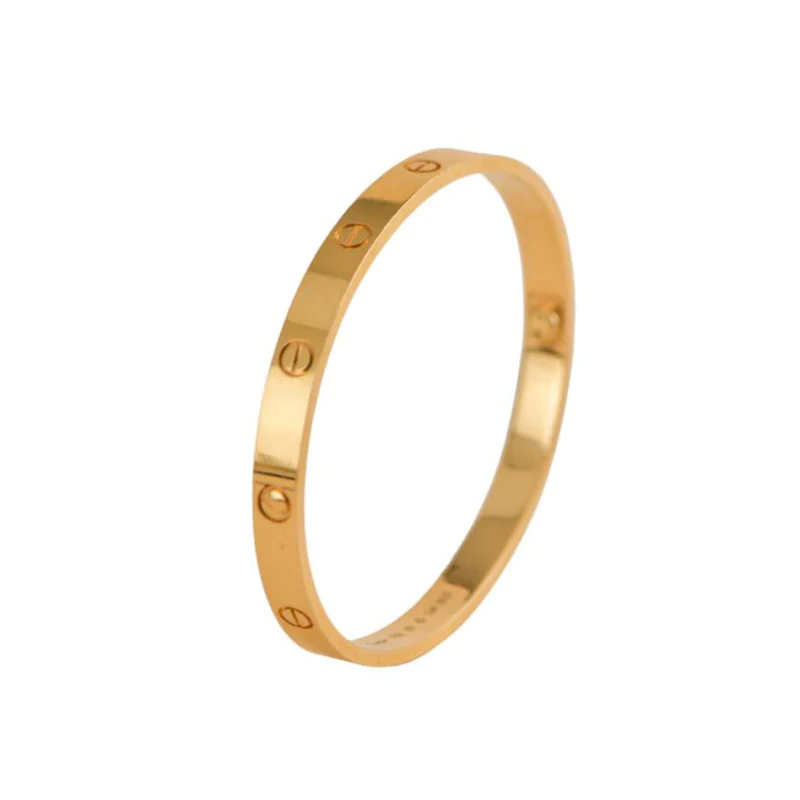
While Cartier is often celebrated for its high jewelry, it has also played a pivotal role in advancing the world of haute horlogerie. The brand’s commitment to precision and innovation is evident in the design and craftsmanship of its watches.
One of Cartier’s most iconic contributions to the world of watchmaking was the introduction of the Santos de Cartier in 1904. It was designed for Alberto Santos-Dumont, a Brazilian aviator, and marked the world’s first pilot’s wristwatch. This was a game-changer, revolutionizing not only timekeeping but also the design of wristwatches.
Cartier’s dedication to crafting exceptional timepieces continued through the years. The brand’s watch collections reflect a marriage of timeless design and innovative technology. Cartier’s watches symbolize luxury and craftsmanship, whether the classic Tank watch or the contemporary Drive de Cartier.
The Evolution of the Cartier Santos and Tank Watches
The Cartier Santos and Tank watches are two of the brand’s most iconic and enduring timepieces, with a history that spans over a century.
The Cartier Santos, inspired by aviation, boasts a square case and exposed screws, a design that has remained virtually unchanged since its creation. Its simplicity and elegance make it a timeless classic.
The Tank watch, introduced in 1917, derives its name from the shape of the case, which resembles a tank’s tracks. Its clean lines and geometric design captured the spirit of the Art Deco period and continue to define understated elegance.
While both the Santos and Tank watches have retained their original design principles, Cartier has introduced various iterations, including models for women, clocks, and skeletonized versions. These timepieces have adapted to the modern era while preserving their historical significance.
The Cartier-Bell & Ross Connection
In luxury watchmaking, partnerships and collaborations often lead to remarkable creations. Cartier’s connection with Bell & Ross, a French watch company known for its aviation-inspired timepieces, is a prime example of such collaboration.
Bell & Ross founder Bruno Belamich spent over ten years working with Cartier before establishing his watch brand. The influence of Cartier’s aviation watches can be seen in the design language of Bell & Ross watches, characterized by their instrument panel aesthetics and robust construction.
The Cartier-Bell & Ross connection reflects the enduring impact of Cartier’s pioneering spirit in aviation horology, inspiring a new generation of watchmakers and collectors.
Cartier’s legacy in luxury watchmaking is a testament to the brand’s dedication to excellence and innovation. From introducing the world’s first pilot’s wristwatch to creating enduring classics like the Santos and Tank watches, Cartier has consistently set the bar for haute horlogerie. Its influence extends beyond its creations, shaping the landscape of luxury watchmaking and inspiring partnerships that continue to define the industry.
Vuitton: The Art of Travel
Louis Vuitton, the name synonymous with luxury, elegance, and a spirit of adventure, has built its legacy on the art of travel. The brand’s journey is a captivating tale of its adventurous beginnings, the meticulous craftsmanship of its luggage, the iconic Louis Vuitton monogram, and its expansion beyond travel accessories.
The Adventurous Beginnings of Louis Vuitton
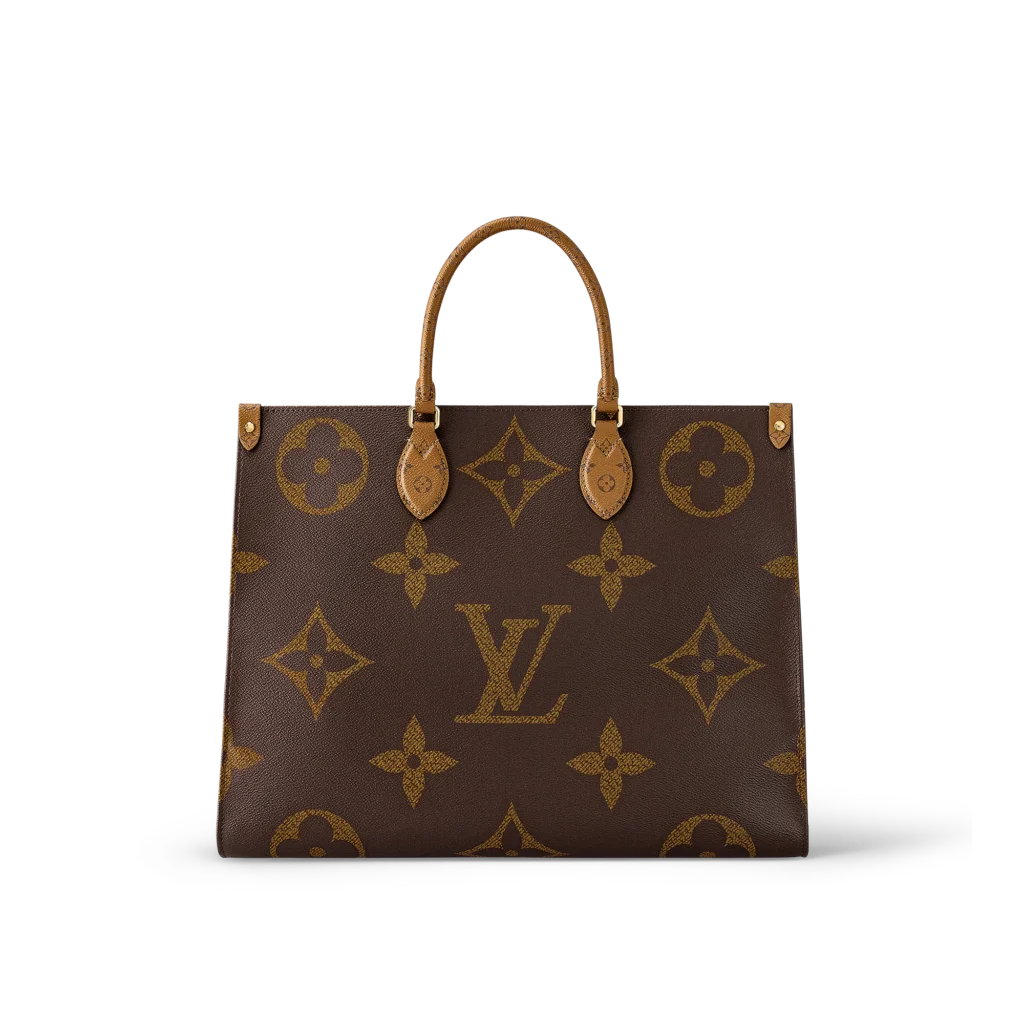
The Louis Vuitton story began in 1854 when a young Louis Vuitton founded his eponymous brand in Paris. Vuitton’s early years were marked by wanderlust and an insatiable curiosity about the world. He started as an apprentice packer for the elite and the traveling aristocracy. This experience exposed him to the intricacies of creating trunks and luggage that could withstand the rigors of global travel.
Vuitton’s innovative spirit led to his introduction of flat-topped trunks, a stark departure from the common domed trunks at the time. These trunks were more practical for stacking in train compartments and ships and added an element of style to travel.
Crafting Luggage for the Elite Traveler
Louis Vuitton’s commitment to quality and craftsmanship quickly earned him a reputation as a luxury luggage purveyor. His trunks were meticulously crafted, featuring innovative designs and sturdy materials that could endure the challenges of long journeys. Vuitton’s trunks quickly became the choice of European nobility, elite travelers, and explorers.
One of the most significant innovations was the Trianon canvas, which replaced the traditional leather trunks. This material was lightweight and resistant to water and wear, making it ideal for travelers. Vuitton’s attention to detail was evident in every aspect of his creations, from secure lock systems to cleverly designed compartments.
The Iconic Louis Vuitton Monogram
The Louis Vuitton monogram, one of the most recognizable symbols in the fashion world, was introduced in 1896 by Louis’s son, Georges Vuitton. It was a response to the increasing popularity of Vuitton’s creations, often imitated but never equaled in quality.
The monogram, interlocking LV initials, and stylized flowers were designed to prevent counterfeiting. It served this practical purpose and became a symbol of authenticity and sophistication. Over the years, the monogram has been celebrated in various Louis Vuitton collections, from handbags to ready-to-wear clothing.
Expanding Beyond Luggage
While Louis Vuitton’s legacy began with luggage, the brand’s ability to adapt and evolve has been one of its defining features. Today, Louis Vuitton is not just about travel accessories; it is a global powerhouse in fashion and luxury.
Louis Vuitton’s expansion beyond luggage started with handbags in the early 20th century. The iconic Speedy bag, introduced in 1930, is still celebrated for its elegance and functionality. It became a symbol of modern fashion and style.
The brand has expanded into ready-to-wear clothing, shoes, accessories, fragrances, and more. Louis Vuitton is not just a brand; it’s a lifestyle embodying the spirit of adventure and elegance that has defined it from its beginnings.
Louis Vuitton’s legacy is built on the art of travel, a journey that began with innovative trunks and luggage and evolved into a global symbol of luxury. The brand’s commitment to craftsmanship, innovation, and its iconic monogram has made it a household name in fashion. Beyond luggage, Louis Vuitton continues to inspire a spirit of adventure and elegance that transcends time and borders.
Vuitton’s Influence on Luxury Fashion
Louis Vuitton, a brand that epitomizes luxury and timeless elegance, has set the standard for travel accessories and profoundly influenced the world of luxury fashion. Its legacy is a compelling story of merging heritage and innovation, shaping modern luxury fashion, and the rise of its ready-to-wear collections.
The Marriage of Heritage and Innovation
The brand’s unparalleled ability to balance heritage with innovation is at the heart of Vuitton’s influence on luxury fashion. Louis Vuitton’s journey began in the 19th century when Louis Vuitton himself founded the brand. His innovative spirit and craftsmanship quickly earned him a reputation as a master trunk maker. He introduced groundbreaking concepts such as flat-topped trunks and the lightweight Trianon canvas.
These innovations became the foundation of the brand’s legacy, setting the stage for its expansion into fashion. Despite the brand’s centuries-old heritage, Louis Vuitton has consistently embraced modernity, adapting to the changing demands of the luxury fashion landscape.
Vuitton’s Role in Modern Luxury Fashion
Louis Vuitton’s role in modern luxury fashion is nothing short of revolutionary. The brand’s expansion into fashion began with handbags in the early 20th century. The Speedy bag, introduced in 1930, quickly symbolized modern style and sophistication. It was a fusion of function and aesthetics, shifting from traditional travel accessories to everyday fashion.
The Louis Vuitton monogram, designed in 1896 to combat counterfeiting, symbolized authenticity and luxury. It is one of the most recognizable logos in the fashion world and has been celebrated across various Louis Vuitton collections.
Vuitton’s collaboration with renowned designers, including Marc Jacobs and Nicolas Ghesquière, further solidified its position in modern luxury fashion. These collaborations infused fresh creativity and innovation into the brand’s collections while respecting its rich heritage.
The Rise of Vuitton’s Ready-to-Wear Collections
One of the most significant developments in Louis Vuitton’s influence on fashion is the rise of its ready-to-wear collections. While the brand’s legacy began with luggage, it has seamlessly transitioned into offering an entire wardrobe for the modern luxury consumer.
Vuitton’s ready-to-wear collections encompass a wide range of clothing, from stylish dresses and suits to casual wear. They embody the brand’s commitment to quality, craftsmanship, and a seamless classic and contemporary design blend.
The brand’s runway shows and presentations have become highly anticipated events in the fashion world. These shows showcase Louis Vuitton’s ready-to-wear collections and innovative presentation approach, often held in breathtaking locations and featuring immersive experiences.
Vuitton’s influence on luxury fashion is a testament to its ability to adapt and innovate while preserving its rich heritage. The brand has successfully ventured from crafting trunks and luggage to shaping modern luxury fashion. Its iconic monogram, commitment to craftsmanship, and the rise of its ready-to-wear collections have solidified its place as a global leader in fashion and luxury. Louis Vuitton is not just a brand; it’s a symbol of elegance, innovation, and the enduring allure of modern luxury.
Challenges and Reinvention
Louis Vuitton, a brand that has defined luxury for generations, has faced its share of challenges. In response, the brand has undertaken a process of reinvention that addresses issues such as counterfeiting, embraces sustainability, and nurtures a culture of collaboration.
Facing Counterfeiting Challenges
One of the most significant challenges Louis Vuitton has faced is the pervasive issue of counterfeiting. The brand’s iconic monogram and timeless designs have made it a prime target for counterfeiters. Knock-off Louis Vuitton products flood markets worldwide, diluting the brand’s image and causing financial losses.
To combat counterfeiting, Louis Vuitton has adopted a multi-pronged approach. It employs cutting-edge technology, such as microprinting and holograms, to ensure the authenticity of its products. The brand also pursues legal action against counterfeiters and works closely with law enforcement agencies to dismantle counterfeit operations.
Furthermore, Louis Vuitton has recognized that educating consumers about the consequences of buying counterfeit products is essential. It launched campaigns to raise awareness about the economic and ethical implications of counterfeiting, thus fostering a more informed and responsible consumer base.
Vuitton’s Approach to Sustainability
In an era where sustainability is paramount, Louis Vuitton has taken significant steps to address environmental and social responsibility. The brand recognizes that its legacy and reputation depend on its evolving ability.
Louis Vuitton has adopted a comprehensive sustainability strategy encompassing every stage of its production process. This includes using ethically sourced materials, implementing environmentally friendly manufacturing practices, and reducing waste and carbon emissions. The brand also promotes transparency by disclosing its sustainability efforts to the public.
Furthermore, Louis Vuitton has made substantial contributions to social causes, such as education and women’s empowerment, through the Louis Vuitton Foundation. This commitment to sustainability goes beyond words, reflecting a genuine dedication to creating a more sustainable future.
The Collaboration Culture of Louis Vuitton
Collaboration has been a cornerstone of Louis Vuitton’s reinvention. The brand has embraced the power of partnerships to infuse fresh perspectives and creativity into its collections. This approach is reflected in its collaborations with renowned designers and artists.
These collaborations from Marc Jacobs to Nicolas Ghesquière have reinvigorated Louis Vuitton’s ready-to-wear collections, bringing a contemporary edge to its timeless elegance. The brand’s collaborations with artists like Stephen Sprouse, Yayoi Kusama, and Jeff Koons have blurred the lines between art and fashion, capturing the imagination of a new generation.
Louis Vuitton has also ventured into the world of high-profile collaborations. Its partnership with Supreme, the iconic American streetwear brand, was a game-changer, bringing together the worlds of luxury and street style in a groundbreaking collection.
The challenges that Louis Vuitton has faced have prompted a process of reinvention that has strengthened its position as a global luxury leader. Its efforts to combat counterfeiting, commitment to sustainability, and culture of collaboration have shaped a brand that is not only timeless but also resilient and responsive to the evolving demands of the modern world. Louis Vuitton’s legacy is not only in its iconic designs but also in its ability to overcome challenges and continue to redefine luxury for a new era.
Comparing the Legacies
In the world of luxury, few names shine as brightly as Chanel, Cartier, and Louis Vuitton. These iconic brands have shaped the luxury landscape and left an indelible mark on fashion, jewelry, and travel accessories. As we delve into the legacies of these three brands, common threads emerge, showcasing their shared commitment to excellence, timeless appeal, and the enduring prestige of luxury.
Common Threads in Chanel, Cartier, and Vuitton
One of the most striking common threads among Chanel, Cartier, and Louis Vuitton is their unwavering dedication to quality and craftsmanship. Each of these brands has a rich history that spans over a century, and throughout their journeys, they have consistently delivered products of the highest caliber. Whether it’s Chanel’s classic suits, Cartier’s exquisite jewelry, or Louis Vuitton’s iconic luggage, the commitment to excellence is a shared value that defines their legacies.
Additionally, these brands have all withstood the test of time. They have navigated the tumultuous waters of history, evolving with the changing times while preserving the core values that make them iconic. The ability to adapt without sacrificing their unique identities is a testament to their enduring appeal.
Iconic Products and Their Timeless Appeal
Chanel, Cartier, and Louis Vuitton are celebrated for their iconic products that have transcended trends and remained eternally stylish. Chanel’s little black dress, Cartier’s engagement rings, and Louis Vuitton’s monogrammed luggage are just a few examples of products that symbolize elegance and sophistication.
Chanel’s little black dress, introduced in 1926, epitomizes simplicity and style. It has remained a wardrobe staple for women worldwide, a testament to Coco Chanel’s vision of liberating women from the constraints of elaborate gowns.
Cartier’s engagement rings, particularly the “Solitaire” ring, have set the standard for symbols of love and commitment. Their timeless designs have become cherished heirlooms passed down through generations.
Louis Vuitton’s monogrammed luggage is not just a travel accessory but a status symbol. Its enduring popularity is a testament to its blend of form and function, appealing to both the practical traveler and the fashion-conscious.
The Enduring Prestige of Luxury
The legacies of Chanel, Cartier, and Louis Vuitton are all intertwined with the concept of luxury. They have redefined luxury in their respective domains, going beyond the mere concept of luxury and extravagance. Luxury is about quality, timeless elegance, and a commitment to craftsmanship for these brands.
They have also shown that true luxury is not fleeting but a concept that endures through generations. The products created by these brands are not just items to be consumed but symbols of a lifestyle, a legacy, and an enduring prestige that carries forward.
The legacies of Chanel, Cartier, and Louis Vuitton share common threads of commitment to quality, the creation of iconic products with timeless appeal, and a dedication to the enduring prestige of luxury. These brands have not only left their mark on the world of fashion, jewelry, and travel accessories but have redefined the very concept of luxury itself. Their legacies are a testament to the enduring allure of timeless elegance.
Conclusion
In the ever-evolving world of fashion, jewelry, and luxury travel accessories, the legacies of Chanel, Cartier, and Louis Vuitton stand as shining beacons of enduring excellence. These iconic brands have crafted timeless products and left an indelible mark on their industries. As we conclude our exploration of their legacies, we celebrate the timeless essence of these brands, draw lessons for aspiring legacy makers, and pay tribute to the enduring impact of Chanel, Cartier, and Louis Vuitton.
The Timeless Essence of Iconic Brands
The essence of an iconic brand lies in its ability to transcend time and trends. Chanel, Cartier, and Louis Vuitton have achieved this in spades. Their creations, whether it’s Chanel’s little black dress, Cartier’s engagement rings, or Louis Vuitton’s monogrammed luggage, have retained their appeal through the ages.
This timelessness is a testament to the brand’s unwavering commitment to quality and craftsmanship. It’s a reminder that true luxury doesn’t fade; it only becomes more precious with time. The enduring essence of these brands is a source of inspiration for those who seek to leave a legacy of excellence.
Lessons for Aspiring Legacy Makers
Aspiring legacy makers can find invaluable lessons in the journeys of Chanel, Cartier, and Louis Vuitton. First and foremost, the pursuit of quality and innovation should be unwavering. These brands have consistently delivered products that are not just beautiful but also technically brilliant. It’s a lesson that craftsmanship and attention to detail are the cornerstones of creating lasting legacies.
Adaptation without losing identity is another crucial lesson. These brands have navigated changing times and consumer preferences while preserving the essence of their legacies. It’s a reminder that evolution is necessary for survival but should always be in harmony with the core values that define a brand.
Collaboration is also a key lesson. Chanel, Cartier, and Louis Vuitton have harnessed the power of partnerships with designers and artists to infuse fresh creativity into their collections. It’s a reminder that collaboration can bring new perspectives and innovation to any legacy.
Celebrating Chanel, Cartier, and Vuitton’s Enduring Impact
Chanel, Cartier, and Louis Vuitton have not merely created products; they have crafted enduring legacies that have left an indelible mark on fashion, jewelry, and luxury travel. Their impact extends beyond the products themselves; it’s in the values they represent.
They have redefined luxury as not just about opulence but as a commitment to quality, timeless elegance, and a dedication to craftsmanship. They have shown that true luxury endures through generations, becoming integral to a lifestyle.
In celebrating the legacies of Chanel, Cartier, and Louis Vuitton, we recognize that their influence reaches far beyond their industries. They are symbols of excellence, style, and the enduring allure of timeless elegance. They are reminders that a legacy is not built in a day but through years of dedication, innovation, and unwavering commitment to the essence of true luxury.
Ultimately, their legacies inspire those who aspire to create something that stands the test of time, and they remind us that the pursuit of excellence is a timeless journey in itself.





